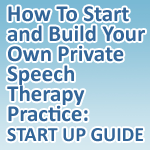
Speech Therapy Telepractice: Engaging and Effective
You’re never too old to become younger.
Mae West (1892 – 1980)
I advocate for telepractice because it helps to improve access to therapy services. Therapy services improve the quality of lives. Therefore, telepractice improves the quality of lives.
A common question that people ask me is “How do you develop a relationship with your clients or even teach them if you are not in the same room as they are?”. A few of my thoughts are as follows:
1. I know how to fly it. When asked how I ensure my interactions are effective, an airplane flies into my mind. Airplanes are also valuable for connecting people…but an airplane is just a tool. Alone it is useless. If a person uses the tool incorrectly, the airplane will not be so useful nor safe. A competent pilot is required to ensure the passengers have a safe, pleasant flight. Similarly, when connecting with people on-line, a competent therapist is required for clients to have an engaging, effective experience. Telepractice is a tool. Use it respectfully and skilfully in the best interest of your clients. Just as important is selecting the appropriate clients for on-line therapy. ASHA has several valuable resources on using telepractice. This link is a place to start: http://www.asha.org/docs/html/KS2005-00077.html
2. I know who my clients are. It has been my privilege to visit the communities where my students live. I know them by name – they taught me what they need. The on-line software I use was developed for them and their needs. I cannot emphasize how absolutely essential it is to know your community. You, as the speech-language pathologist, need to remember that you are the outsider. It behooves you to educate yourself about the community’s culture and expectations. We tend to do things the way we do things. Be sure ‘your way’ matches the community’s values. If you don’t know, respectfully ask how you can best be of service and invite the community to let you know if they would like anything done in a different way. I am still learning – but learning is a good thing. Because my students have taught me so much, I am able to contribute my services in a number of effective ways.These are a few examples:
a. Direct Therapy: My games cupboard is loaded to the top with animated and interactive therapy games that support speech and language development. Several of the activities, such as Mermaid Memory and Pronoun Fishing, were inspired by my students. They learn that their words and their listening ears are magical because ‘things happen’ when they participate!
b. Open Door Time: Some communities just need access to an Speech-Language Pathologist for consultative support and training to build capacity within the schools. It feels so great to pop into a school on-line to provide support. It is important to know when it is best to visit a school in person – despite the distance. I feel so fortunate to have a team of colleagues who collaborate to fly to communities for temporary in-house support.
c. Virtual Backpack: My students receive a password to their very own virtual backpack. I sneak in special practice games for them to try with their parents or teacher. In addition, I may add a video message to say hello and give a tip for the week. This helps to keep everyone in the loop and moving forward together.
3. Spark works. Just as I would in a same-location visit, I bring my spark to work when I visit my clients on-line. I just show it from the neck up.
a. Non-verbal communication: Raise your eyebrows. Widen your eyes. Smile. Smile again. Look at your client. Of course you do not want to seem unnatural; however, use your face to show you are happy to be there and that you are so interested in what that student is doing. Throw in an occasional laugh in delight of the magic they are pulling off with their developing skills.
b. Verbal: At this point in my career, I have said ‘hip hip hooray’ so many times, I even say it to the person who changes the oil in my car. It just comes naturally. Words mean a lot to kids. I take words seriously. My students beam with pride during the sessions because they know they are the star of the show.I have found that they count on hearing certain phrases. For example, when they are learning to say a sound or word and they do it correctly, I might sing, “My ears are daaaaancing, my ears are daaaancing!”. When I do not say that, some have asked, “Are your ears dancing?”.
c. Bill Cosby: Have you ever watched Bill Cosby talk with kids? Doesn’t it seem like the only people in the world are Mr. Cosby and that child? He genuinely wants to know them. He genuinely wants to engage them in a topic in a way that appeals to them. He genuinely forgets his pride and he jumps into the circle with that child and makes the moment great. Every day, I try to pull off a “Bill Cosby”.
So those are just some initial thoughts on how I engage my clients and ensure the services are effective. Every day I give it my all – and I learn at least one trick to make it better the next time. Maybe I am flying the plane…but the children are the wind beneath the wings. I know that sounds funny – I even took a moment to start deleting it, but that would mean I was trying to be too grown up … and I hope I am never too old to become younger.
If a school district in your area needs Speech-Language Pathologists, please let me know by clicking here!


Marnee Brick, MSc
Speech-Language Pathologist and Director of of Speech Therapy
TinyEYE Therapy Services (Speech Therapy Telepractice)





